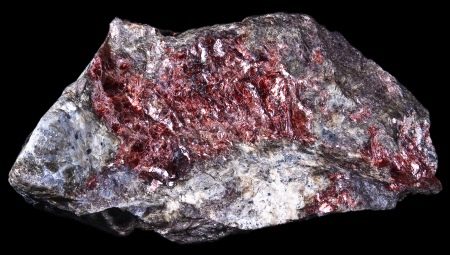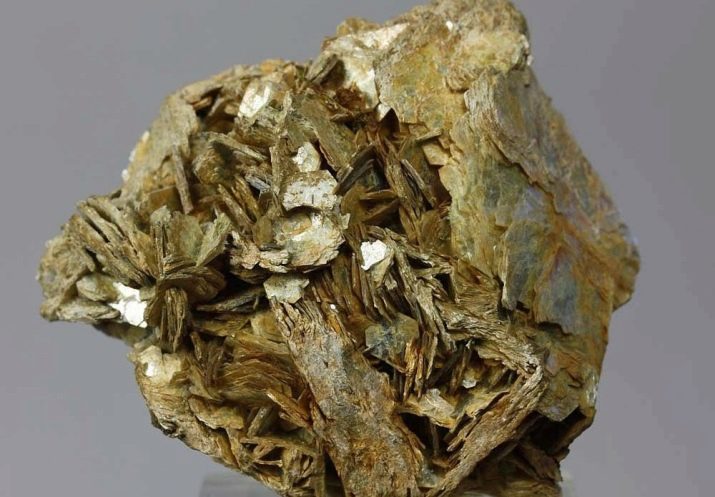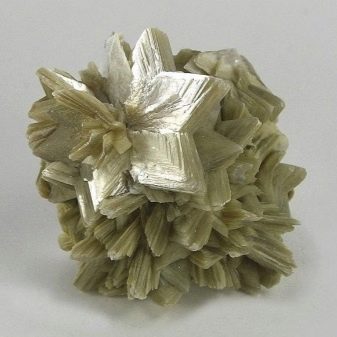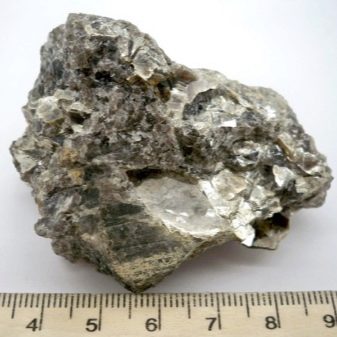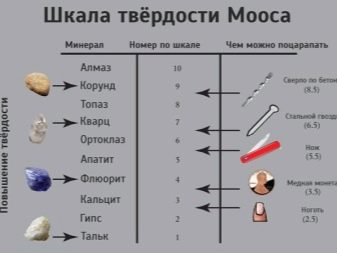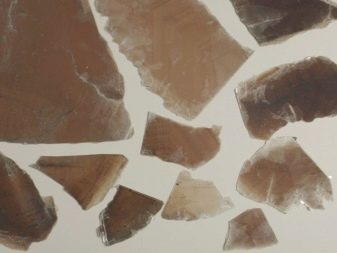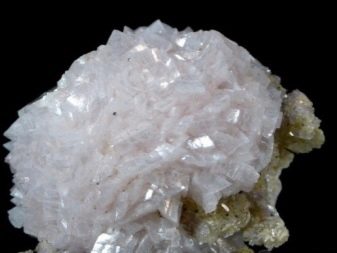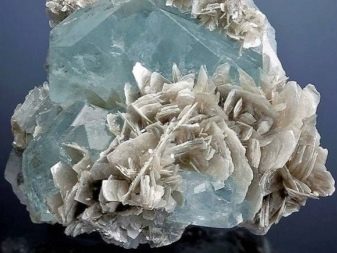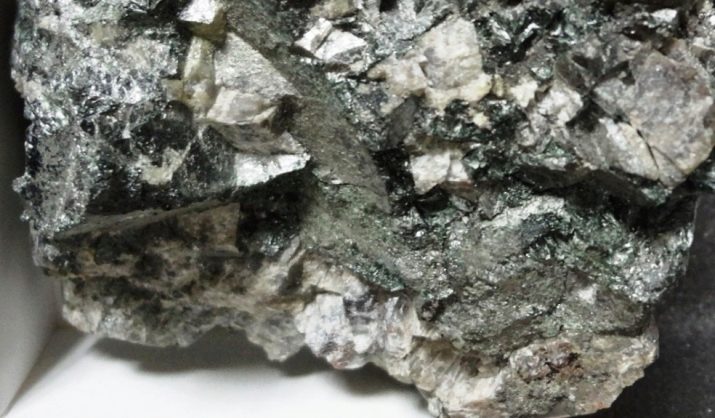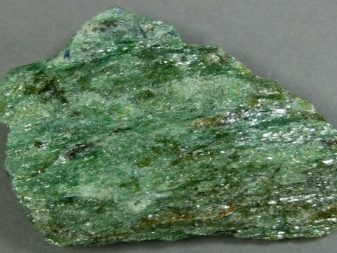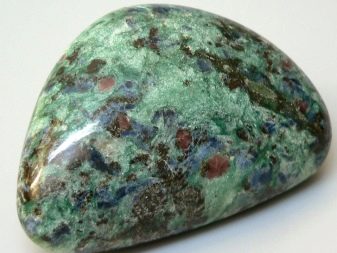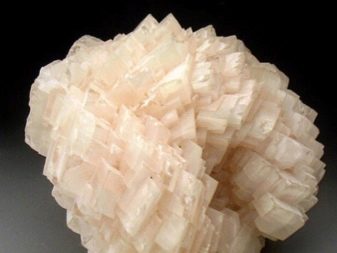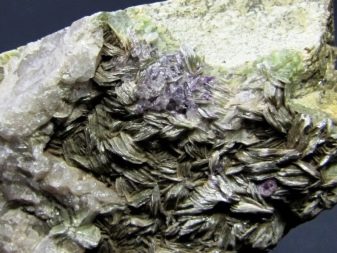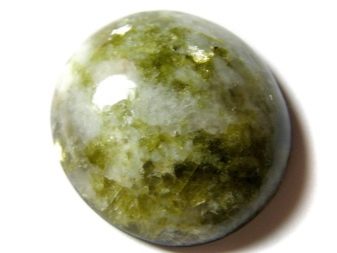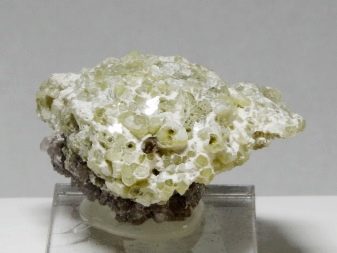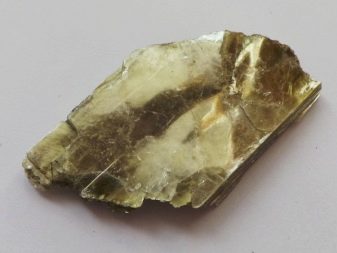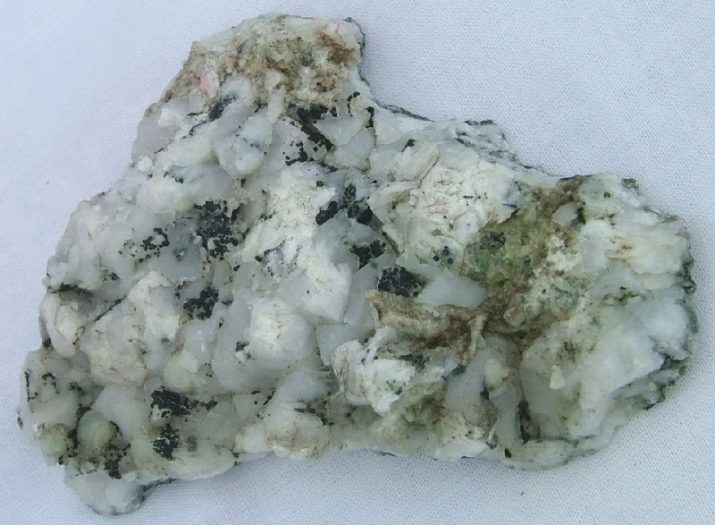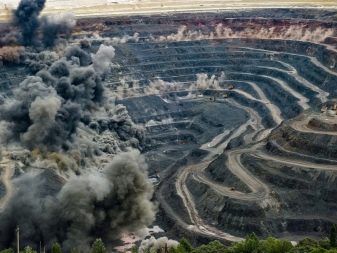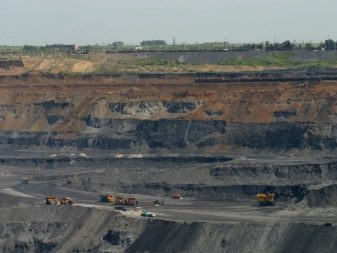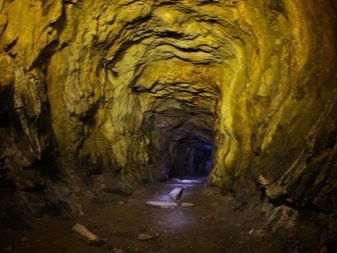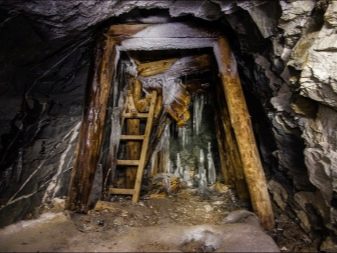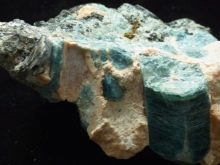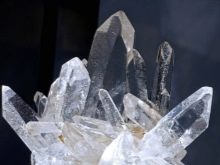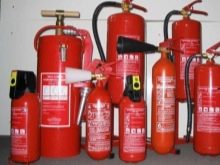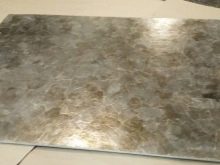Mica is known in Russia since the X-XII centuries. Its distribution began with Novgorod and the Karelian Peninsula. There were first attempts to use it as window glass. In Moscow, it appeared only after the conquest of Novgorod by Ivan the Terrible. In the XVII-XVIII centuries. A large amount of the mineral was exported to Europe, where products and window glass were made from it. The origin of the name is connected with this: the word Muscovite is derived from the words Moscow and Muscovy.
In addition to the name we use, muscovite, the mineral was also called the starfish, white mica, leukofillite, antonite, sericolite, shernikite.
Description
Muscovite belongs to the group of micas, the class of aqueous aluminosilicates. Chemical formula KAl2 [AlSi3O10] (OH, F) 2. Does not apply to jewelry materials. The main field of application is electronics.
It has the following composition:
- silicon - 45.3%;
- water - 4.2%;
- aluminum - 38.7%;
- potassium oxide - 11.8%.
These are white or colorless crystals. And depending on where they are, they have different shades. Of all the variety of shades, gray, milky-white and white minerals are most common. According to the degree of gloss, pearly, silky or glass muscovite are distinguished.
Pieces of rock have a tabular, plucked or lamellar structure of a diamond-shaped section. The faces are distinguished by horizontal shading, and crystals with unique, uneven patterns of different shades.
The hardness of the mineral varies in the region of 2-2.5 on the Mohs scale (diamond is taken as an absolute hardness, which has a hardness index of 10).
Muscovite elastic, resilient, but fragile stone. It is easily split into separate plates, and has a very good cleavage (a consequence of its crystalline structure). It melts poorly (not lower than at 1600 ° C), thus forming a yellow or gray mother of pearl. At a temperature of 850 ° C loses water. When interacting with acid does not dissolve.
Origin
There are several ways to form muscovite,
- Magmatic origin. Muscovite is found in veins of igneous origin. And never formed in the streamed rocks. After cooling and crystallization of medium and acid magmas, muscovite is released. It is a rock-forming part of some rocks (for example, granite). In this case, muscovite is scattered over the entire area of pegmatite (the area of formation of the “main” rock) or gathered into nests (they can reach 1.5–2 m.). The layered structure indicates that it lies horizontally. Industrial interest is only interspersing large crystals. In their structure, elements of such rocks as garnet, tourmaline, quartz, zircon, rutile and others are often found.
- Metamorphic origin. The contact of intrusions (geological accumulation of igneous rocks formed in the depths of the earth's crust) and rocks.
- In layered clays and oozy sediments. There they fall as a result of the process of weathering. Under the influence of the wind, small patches of muscovite in open areas are stratified and showered with small particles. If weathering is chemical, muscovite can be transferred to other formations.
Varieties
Depending on where the minerals are deposited and what properties they possess, there are several types.
- Fengit. A distinctive feature is a large silicon content. Magnesium and iron in the composition can replace aluminum.If a high chromium content is noted in the chemical structure, then this mineral is called mariposit.
If the manganese content is elevated, the mineral is called alurgite.
- Damurit. It has a white color. It is a dense or thin scaly mineral. For disthen is the parent breed.
- Roscoelite. Small flaked mineral of green, brown or black color with pearl shimmer.
- Fuchsite. Stones with increased elasticity and refractoriness. Large crystals formed in the rocks of chromium. And as a result, the composition of the mineral is a high content of chromium. Have a bright green color.
- Sericite. White mica with a small flaked structure and silky sheen. It is found near such types of mineralization as gold and copper. It is formed in sericite schist, fellites, quartzites. It has a high content of silicon. Does not interact with acid and almost does not melt. Formed at medium and small depths under the influence of aqueous solutions and high pressure.
- Gumbel. Mineral having a fibrous structure. It has a gray color. Mining is carried out in the fields of Karelia, together with carbonaceous slate.
- Gilberttis. Very rare form of mica. It has a small flaked structure. The color is green. It is mined in ore veins.
- Gilles-bert. Muscovite, having a light yellow color. Formed at medium depths in the pegmatite veins - large deposits that can reach 5-6 km in length.
- Illit (term). Mineral in which mica is mixed with clay. The structure remains lamellar.
The chemical composition of muscovite can have up to 30 kinds of impurities.
Place of Birth
More than one trillion tons of mica is mined in the world annually. Russia, China and India topped the rating of countries for the extraction of muscovite.
In the US, mining is carried out in the Sprut Pine deposit. A field is also being developed in North Carolina.
In Russia, the development of muscovite is in the areas of Mamsko-Chui, Stupinsky, Yensky.
The Mamsko-Chuyskoye field is located in the Irkutsk Region on the Baikal-Patom Highlands. The length of the explored rocks is 250 km, and the width is 50 km. This is the largest mica deposit in Russia.
The Stupinsky district is located in Karelia, where deposits such as Plotina, Malinovaya Varakka and Tedino are being developed. And in the Ensk area of the Murmansk region there are deposits Rubinovoye and Yena.
In these areas they develop deposits that run from Belomorsk on the North Sea coast to the Kandalaksha Bay, and from there to the border with Finland.
Extraction of small-flaked muscovite is concomitant to the extraction of rare-metal ores. Such deposits are being developed in India (Rajasthan and Andhra Pradesh), Brazil, Canada and Zimbabwe. Scaly muscovite mined in countries such as Pakistan and Finland is of very high quality.
Muscovite of magmatic origin is mined from calcareous and crystalline schists in Italy (Piedmont Alps), the Russian Federation (Chelyabinsk Region).
The largest stock of muscovite is in China. About 800 thousand tons of mica are mined there annually, 20% of which is accounted for by extraction of muscovite.
The largest percentage of leafy muscovite production comes from India. There are developed several areas with ore deposits.
- Bihar (a state in eastern India, bordered on the north of Nepal). The territory located in the depths of the country. The field is coming to the Himalayan mountain range. It accounts for 60% of the total production in the country.
- Andhra Pradesh (state, which is located on the south-east coast of the country). About 25% of the total extraction of muscovite leaf. Only muscovite and its attendant minerals are mined at this deposit. Muscovite is produced in ruby and green colors.
- Rajasthan (state in northwestern India). About 15% of the total extraction of muscovite leaf.
In addition to the above countries, muscovite mined: Argentina, France, Fr.Madagascar, Turkey and Taiwan.
Properties
We list the properties of this mineral.
- Color: white, silvery white, milky white, pinkish, light yellow, green, red, gray, greenish brown. Sometimes there are minerals containing several colors.
- Mineral plates are transparent.
- The fracture has a pearl, silver or silky sheen.
- Refractive indices: Np = 1,552–1,572 and Ng = 1,588–1,615.
- Mineral plates are elastic.
- Hardness within 2-3 units on the Mohs scale (can be scratched with a hard object).
- Density varies from 2.5 to 3.2 (depending on the percentage of iron).
- The surface relief is stepped.
- Good dielectric.
- Does not interact with acids.
- Melts at a temperature of more than 1500 ° C.
- To the touch a pleasant temperature, non-greasy.
- Low weathering resistance.
- Related minerals: tourmaline, apatite, quartz, garnet, staurolite.
Practical use
The main fields of application of muscovite are instrument engineering, radio engineering and the electrical industry.
There are several basic uses of the mineral.
- As dielectric (Muscovite has good electrical insulating qualities). Sheet mica is used for this. Depending on the size of the plates, their color and impurities in the mineral, they are used to create electric lamps, oil lamps, mica glasses, insulators, capacitors or telephones.
- Mica powder is used to create fire extinguishing agents, fireproof ceilings, fireproof paints and ceramic products. In addition, it is used in the manufacture of mica cardboard, wallpaper, explosives, lubricants and other. The powder is made from scraps of mica sheet.
- Creation of semi-finished products. For example, micanite. It is made from ground scraps of mica leaves, muscovite parts that have already been in use and other mica waste. The production technology of micanite involves gluing individual pieces of shellac and pressing under high pressure.
Look at the beauty of ruby in Moscow, you can in the next video.
